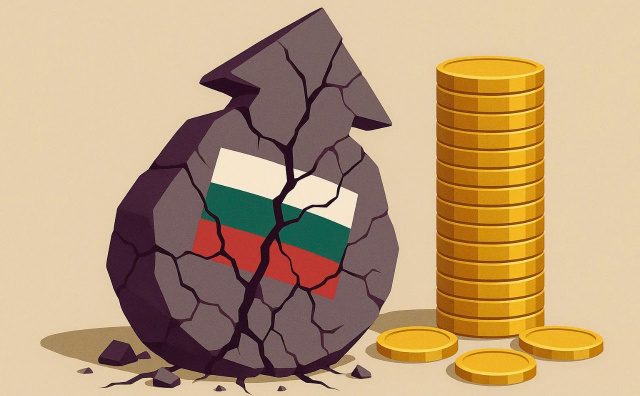Bulgaria remains one of the European Union members with the lowest government debt relative to GDP, yet it also recorded one of the steepest increases in recent quarters. According to Eurostat, at the end of the second quarter of 2025, the gross government debt to GDP ratio in the euro area rose to 88.2%, up from 87.7% in the previous quarter and from 87.7% a year earlier. Across the EU as a whole, the ratio increased to 81.9% from 81.5% three months prior and from 81.2% in the same period of 2024.
Within this context, Bulgaria’s debt remains comparatively low at 26.3% of GDP, with only Estonia (23.2%) and Luxembourg (25.1%) reporting smaller ratios. Meanwhile, Greece (151.2%), Italy (138.3%), France (115.8%), Belgium (106.2%) and Spain (103.4%) recorded the highest debt levels in the second quarter of 2025.
Despite the low level, Bulgaria saw one of the most significant quarterly increases in the debt-to-GDP ratio, rising by 2.6 percentage points compared to the first three months of 2025. This surge was only surpassed by Finland, with a 4.3-point increase, and Latvia, with a 2.7-point rise. Year-on-year, Bulgaria’s debt ratio grew by 4.3 points from the second quarter of 2024, a change exceeded only by Finland, Poland, and Romania.
Looking at absolute figures, Bulgaria’s government debt in 2024 stood at 48,851 million leva, or 23.8% of GDP, according to the National Statistical Institute. The overall budget deficit reached -6,240 million leva, equivalent to 3% of GDP. The “Central Government” subsector reported a deficit of -5,320 million leva (-2.6% of GDP), the “Local Government” subsector a deficit of -849 million leva, and the “Social Security Funds” subsector -71 million leva.
Bulgaria’s economy grew in real terms by 3.4% in 2024 compared to the previous year. Nominal GDP for the year reached 204,907 million leva, with gross value added amounting to 178,772 million leva. These figures illustrate the dual reality Bulgaria faces: a low overall debt level but a sharply rising debt trajectory.
